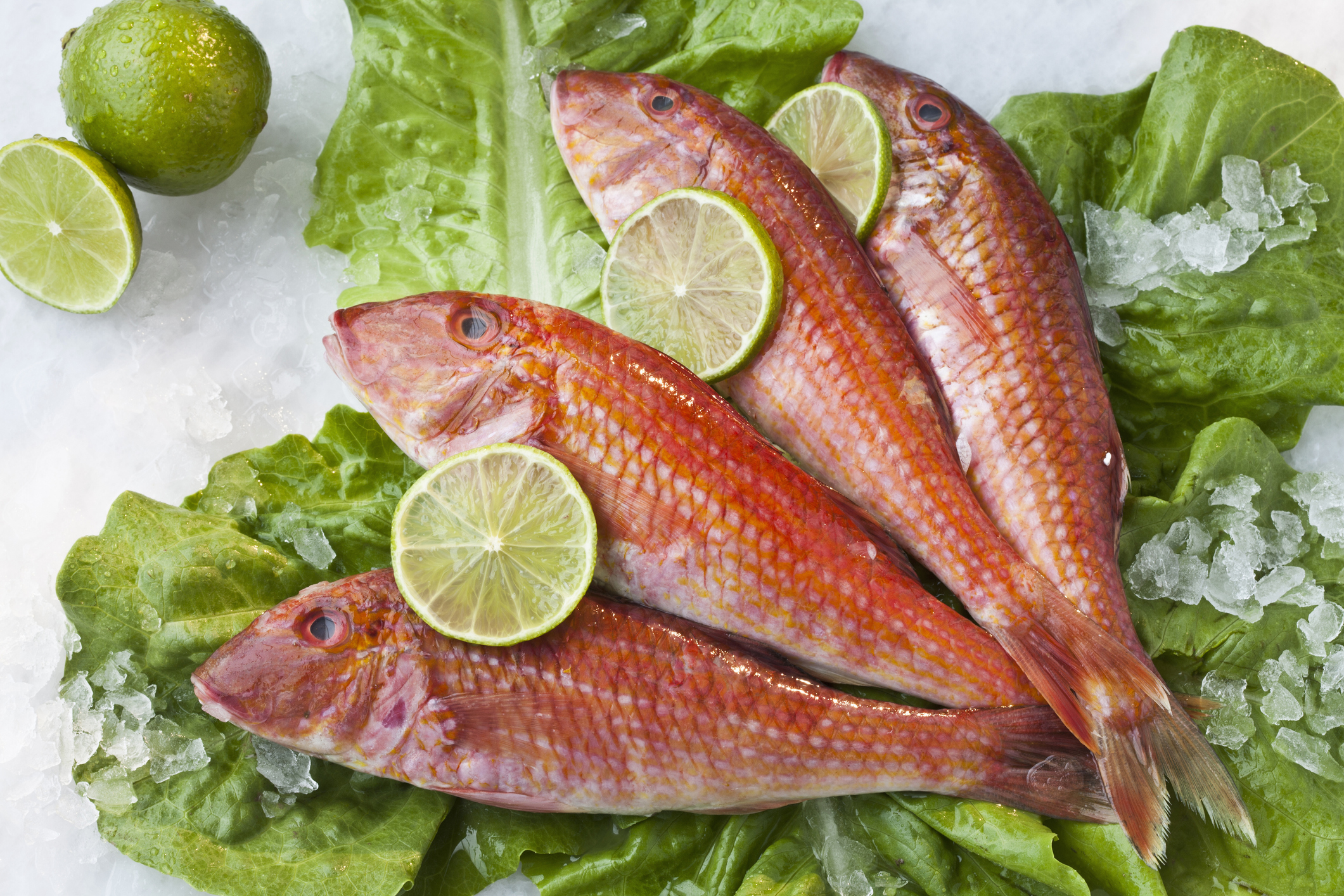Red Mullet: The beauties of the sea, and the one intractable rule for those looking to cook them
Whether deep fried, grilled or poached in acqua pazza, there’s nothing like the subtle, gently rich flavour of red mullet. But always cook it on the bone, warns Tom Parker Bowles, as filleting a fish this fine is plain rude.


‘There is nothing more beautiful than a dying mullet,’ sighed that great Roman Stoic, Seneca. ‘In the very struggle of its failing breath for life, first a red, then a pale tint suffuses it. And, between life and death, there is a gradation of colour into the more subtle shades.’
Now, beauty is all well and good, but to watch a fish, or any living creature, in its death throes for purely aesthetic kicks is downright deranged. The irony being, of course, that Seneca would soon know a thing or two about a slow demise — ordered by Nero to kill himself, he found the process was rather more painful and drawn out than initially imagined. Call it the mullet’s revenge.
Still, the condemned man’s love of the red mullet was widely felt. Although the Greeks revered them as sacred to Hecate, the Romans were obsessed with the brilliant hue of their skin, keeping the fish in specially made ponds and displaying them at the dinner table in great glass bowls, so folk could wallow in their dazzling glory, before they were sent off to the kitchen for their final rites. And Seneca wasn’t alone in his rapt (if somewhat creepy) adoration — Cicero, Horace, Juvenal, Martial, Pliny and Suetonius waxed lyrical, too. The rich, in the last days of the Republic, were equally enamoured, spending ever greater sums on ever bigger fish.
Such was the demand that, at the peak of their popularity, one legendary beast once sold for more than double the fisherman’s worth as a slave. The craze soon petered out, but the mullet’s allure endured.
Sick voyeuristic death ritual aside, you can see the appeal of the fish. With its 50 shades of red, from sweet rose to harridan scarlet, and those delicate golden stripes, the red mullet (which is not actually a true mullet, rather a goat fish, so named thanks to its goatee-like barbels) shimmers and shimmies, a veritable sub-aquan disco diva. Its feeding habits, however, are resolutely unglamorous, being an undiscerning, mud-sucking bottom feeder that hoovers any muck in its path, letting its specially elongated innards do the hard work of separating crustacean and wormy wheat from gritty, dirty chaff.

It’s not only its beauty that transfixes, but the taste, too. There’s no mistaking that flavour: subtle, yet pronounced, both gently rich and lustily delicate. The texture is firm and satisfying, the eating sublime. The French nickname the fish bécasse de mere, woodcock of the sea. Not only because they’re adored by gourmands everywhere, but because you don’t need to gut them before eating. The liver gives the flesh more savoury oomph. Purists claim that they shouldn’t be scaled either, but as Jacques Médecin, Provençal food expert and legendarily corrupt Mayor of Nice (more on him below) writes: ‘It is one thing to appreciate one’s food, and quite another to enjoy fish scales getting stuck between one’s teeth.’ Well, quite.
Whenever I see red mullet on the menu, I snap ’em up like a peckish shark. In the past couple of months, I’ve eaten them deep fried, with the sand between my toes, at Sa Caleta in Ibiza, and grilled, gazing over a pellucid Ionian Sea at Taverna Spiros in Antipaxos — as well as gently simmered in an acqua pazza at The River Café at London’s Thames Wharf.
Exquisite houses, the beauty of Nature, and how to get the most from your life, straight to your inbox.
As with most good fish, simple is always best. Frying pan, fierce grill or sealed up, with a good splash of white wine, en papillote. When buying from the fishmonger, always insist upon the whole fish. I do think the liver and innards add to its appeal, but not all will agree.
There is, however, one intractable rule — red mullet should always be cooked on the bone. When you have a fish this fine, to fillet is just plain rude.
Recipe: Le rouget à la niçoise
This recipe comes from Cuisine Niçoise by Jacques Médecin. Mayor of Nice for 26 years, he was also a famously crooked politician and self-confessed racist to boot.
He fled France in 1990, to escape serious charges of fraud, only to be captured in Uruguay in 1993 and extradited home a year later. There, he served a year in jail. Still, the book is a classic, every bit as fine as its author was rotten.
Ingredients
Serves 6
- 12 medium red mullet, about 100g each
- Salt, pepper
- Plain flour
- 500ml (1 pint) olive oil
- 1kg (2lb) tomatoes, peeled, seeded and coarsely chopped
- 3 lemons
- 12 anchovy fillets
- 36 black olives
- 6tbspn capers
- Juice of 1 lemon
- 3lb chopped parsley
- 60g (2oz) butter
Method
Scale, but do not gut, the red mullet. Score them lightly across their sides, season and roll in flour.
Pour the olive oil into a frying pan (about ¾in deep), and heat. When it starts to smoke, put in some of the fish and fry, [lightly] basting often. When done on one side [about 1 minute], turn. When they are cooked [another minute], transfer to kitchen paper to drain, and cook the next batch.
Arrange in a large gratin dish and cover with the tomatoes. Place two thin slices of lemon, one anchovy fillet, three olives and half a tablespoon of capers on each fish. Sprinkle with the lemon juice and finely chopped parsley.
Bake in oven at 300˚F/150˚C for 20 minutes.
Heat the butter in a saucepan until beginning to turn golden brown, then pour over the fish.

How to cook Dover sole with shrimps and tomato, as recommended by Tom Parker-Bowles
Dover sole is a fish that can be kept as simple as can be, yet adding a little extra from

Tom Parker Bowles: The langoustine dish that 'was one of my grandmother’s favourites', as The King told me. And it's one of his, too
Scampi evokes easy pasta dishes or deep-fried pub grub, but call them langoustines and you have a dish fit for
Tom Parker Bowles is food writer, critic and regular contributor to Country Life.
